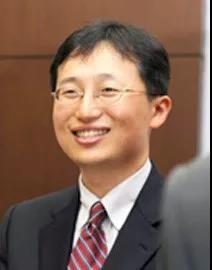
2019年7月13-14日,第二届国际柔性电子学术大会将在杭州举行。本届大会专注柔性电子的前沿领域,截止目前,大会邀请到了美国三院院士John A. Rogers教授、英国剑桥大学教授George Malliaras、Takao Someya教授、Ming Liu教授等21位国内外顶级专家以及3位著名期刊编辑为大家带来前瞻性学术报告。
此次大会主题将包括但不限于有机柔性电子、柔性显示、无机柔性电子、可延展电子、柔性能源、生物仿真电子、可重构电子、瞬态电子、生物合成电子、可穿戴电子和柔性机器人。同时本次大会也是持续为全球产业界、企业界提供更多了解柔性电子领域最新技术进展的机会。


本届大会组委会主席分别是来自清华大学的冯雪教授和美国西北大学黄永刚教授,此外组委会成员还有清华大学段炼教授、罗毅教授、沈洋教授,浙江大学宋吉舟教授,清华大学王晓峰副研究员、张一慧副教授。
参会注册信息
注册付款截止时间 2019年6月20日
展览付款截止时间 2019年6月30日
常规(3000 RMB or 500 USD)
学生(1500 RMB or 250 USD)
详情请访问:会议网站:http://icfe.gfeit.com/
主办方:
柔性电子技术协同创新中心
清华大学柔性电子技术研究中心
承办方:
柔性电子与智能技术全球研究中心
浙江清华柔性电子技术研究院
会议地址:
国际创博中心(浙江省杭州市钱塘新区科技园路267号)
期待与大家相聚杭州,
共同见证柔性电子即将为我们开创的未来时代!
本周人物一
Dae-Hyeong Kim
他年纪轻轻,是学术界的未来之星。2011年至今在首尔国立大学开展独立研究,目前已发表文章100余篇。这一百多篇文章包含2篇Science,2篇PNAS,2篇Sci. Adv.,17篇Nature子刊,7篇Adv. Mater.;6篇ACS Nano除了发文章以外,他还获得了23项专利,其中一些已经实现了商业化。他是谁?他就是我们今天要介绍的大咖,来自首尔国立大学的Dae-Hyeong Kim教授。
Dae-Hyeong Kim

Associate Professor
Seoul National University,
South Korea
Dae-Hyeong Kim教授从首尔国立大学获得了本科和硕士学位(其中本科期间辅修了工商管理),2009年从伊利诺伊大学香槟分校获得了博士学位,师从John A. Rogers。2009年到2011年,他担任伊利诺伊大学香槟分校的博士后研究员。2011年他加入首尔国立大学,目前担任首尔国立大学化学与生物工程学院副教授。
Dae-Hyeong Kim教授主要致力于发展高性能的柔性可拉伸电子器件,其中包含高质量纳米级材料,实现新型多功能生物医学和光电子系统。其中首要任务是改进当前生物医学设备,进而发展前所未有的医疗系统来帮助患者。Dae-Hyeong Kim教授所研发的设备可以通过完全植入、微创和皮肤叠压的方法与人体集成,追求高分辨、高灵敏度的健康监测,通过实时数据存储、分析、诊断,来反馈治疗驱动/靶向材料输送的能力。开发超薄、安全、高效的电源模块是软生物电子学中的另一项关键技术。Dae-Hyeong Kim教授所关注的第二点是使用纳米量子点晶体、钙钛矿薄膜、二维纳米材料以及非常规器件技术来开发高性能软光电器件。比如超薄、透明的显示器,完全的图像传感器阵列和高效的光伏器件。
Dae-Hyeong Kim教授获得了多项奖项,包括George Smith Award (2009),Green Photonics Award (2011),TR 35 award (2011), Hong Jin-ki Creative Award (2015), SCEJ Award (2016)以及Korea Young Scientist Award (2017)。由于他将可伸展材料用于医疗设备的杰出贡献,还被《麻省理工科技评论》(MITTechnologyReview)杂志评选为2013年度全球杰出青年创新人物。
目前,他已发表文章100余篇,23项专利。
本周人物二
Pooi See Lee
柔性透明导电材料是柔性电子器件中不可或缺的组成部分。导电玻璃(氧化铟锡,ITO)因兼具导电性和透明性,在工业中应用广泛,但是该材料脆性大,成本高。因此,研究者将导电复合材料看作是最有希望的替代性材料。
本周我们要介绍的人物,来自新加坡南洋理工大学材料系 Lee Pooi See (李佩诗)教授,其团队基于银纤维溶液液滴中的马拉高尼效应,利用溶液喷射方法获得了银纤维束构成的筛网状导电网络。和无规则结构相比,该筛网结构组成的复合材料具有高透明性、高导电性、良好的防水性和柔性。制备方法简单快捷,使得高透明柔性导体材料可规模化生产,有希望替代当前常用的ITO导电玻璃。
Pooi See Lee

Professor
Nanyang Technological University,
Singapore
Pooi See Lee教授于2001年在新加坡国立大学获得博士学位,2001年至2003年她加入新加坡Chartered半导体制造有限公司(现为Globalfoundries)的研发部门工作。在2001年,她获得美国电化学学会颁发的诺曼黑客青年作家奖的荣誉。2004年1月,她加入新加坡南洋理工大学材料科学与工程学院担任助理教授,于2009年晋升为终身副教授。2015年9月,她晋升为正教授。
Pooi See Lee教授撰写了很多运用于能源、电子方向的纳米材料相关出版物,目前拥有30多项专利。2004年至2008年,她担任材料科学与工程学院本科生院副院长/副主席,2012年至2014年担任研究院副主席,自2014年3月起担任学院副主席。同时,在2014年她被授予National Day Awards和Public Administration Medal (Bronze)。Pooi See Lee教授也是2015年著名的NRF Investigatorship。目前,Pooi See Lee教授是材料研究学会的成员,也是Advanced Energy Materials, Scientific Reports and Frontier的编辑委员会成员。
Pooi See Lee教授研究兴趣主要是合成纳米新材料,并理解其结构特性将其运用于多方面领域。她开发了高能电容器、新型透明导体、柔性可拉伸设备和节能电致变色涂料。她热衷于推进绿色纳米技术的发展,并将研究成果转化运用于实际产业。
目前Pooi See Lee教授主要的研究项目集中以下几方面:
1. 能源器件:运用于电化学超级电容器的一维氧化物纳米线、二维氢氧化物纳米层和氧化石墨烯。同时开发了具有高脉冲功率的高能量密度电容器,压电能量收集器和节能智能玻璃。
2. 纳米电子材料:硅化物、新型电解质、纳米晶体、纳米线和纳米光纤混合物。正在研究的功能器件包括触摸板、纳米线晶体管、电阻开关存储器、压力传感器、气体传感器和发光器件。
3. 有机电子:铁电聚合物、自组装单分子膜、聚电解质和电致变色材料。这些材料已经运用于柔性有机存储器,传感器,电致变色和可拉伸设备。
截至目前,Pooi See Lee教授和他的研究团队在知名期刊上共计发表高水平学术论文250余篇,累计引用次数超过14000,h因子达67。
English Resume
附Dae-Hyeong Kim英文简历:
Dae-Hyeong Kim obtained B.S. and M.S. degree in Chemical Engineering from Seoul National University, Korea, in 2000 and 2002, respectively. He received Ph. D. degree in Materials Science and Engineering from University of Illinois at Urbana Champaign in 2009.
From 2009 to 2011, he was a post-doctoral research associate at University of Illinois. He joined Seoul National University in 2011 and is currently an associate professor in School of Chemical and Biological Engineering of Seoul National University. He also has been serving as an associate director of Center for Nanoparticle Research of Institute for Basic Science (IBS) from 2017. He has been focusing on the research and development of materials and devices for soft electronics, bioelectronics, and optoelectronics. He has been recognized with several awards including George Smith Award (2009), MRS Graduate Student Award (2009), Green Photonics Award (2011), TR 35 award (2011), Hong Jin-ki Creative Award (2015), SCEJ Award (2016), and Korea Young Scientist Award (2017).
His group aims to develop high performance flexible and stretchable electronic devices incorporated with high quality nanoscale materials, which enable novel multifunctional biomedical and optoelectronic systems.
资料来源:
http://flextronics.snu.ac.kr/index.php?mid=Professor&vid=localhost
https://www.elsevier.com/events/conferences/world-congress-on-biosensors/programme/speakers
附Pooi See Lee英文简历:
Prof. Lee received her Ph.D. degree from National University of Singapore in 2001. She joined Chartered Semiconductor Manufacturing Ltd (now Global foundries) in research and technology development department from 2001-2003.
Prof. Lee is a recipient of the 2001 Norman Hackerman Young Author award presented by the Electrochemical Society, USA. In January 2004, she joined the School of Materials Science and Engineering, Nanyang Technological University as an Assistant Professor.She was promoted to tenured Associate Professor in 2009. In Sept 2015, she was promoted to Full Professor.
Pooi See has authored and co-authored many publications in the field of nanomaterials for energy and electronics applications. She holds more than 30 patents filed/provisional applications at present. She served as the Sub-Dean/Asst. Chair (undergraduate) in MSE from July 2004-2008, Associate Chair (Research) in June 2012-2014, and Associate Chair (Faculty) in March 2014. She was awarded the National Day Awards, Public Administration Medal (Bronze) in 2014. Pooi See is a recipient of the prestigious NRF Investigatorship, Class 2015.
Pooi See is a member of Materials Research Society and she serves as the editorial board member of Advanced Energy Materials, Scientific Reports and Frontier. She is interested in synthesizing innovative nanomaterials, and harnessing its multi-functionality through understanding the structural-property characteristics. She has developed high energy capacitors, energy saving electrochromic coatings, novel transparent conductors, flexible and stretchable devices. She is keen in advancing the frontier of green nanotechnology and to translate research outcomes into real solutions.
Pooi See’s research programs are centered on using new materials and materials engineering approaches towards the formation of functional nanostructures with energy and electronic applications. Her research activities include:
1.Energy devices: we focus on 1D oxide nanowires, 2D hydroxides nanosheets and reduced graphene oxides for electrochemical supercapacitors. We also develop high energy density capacitors with high pulse power, piezoelectrics energy harvestors and energy saving smart glass.
2.Nanoelectronic materials: silicide formation, novel dielectrics, nanocrystals, nanowires, and nanocelullose hybrids. The functional devices that are being studied include touch panels, nanowire transistors, resistive switching memory, pressure sensors, gas sensors, and light emitting devices.
3.Organic electronics: ferroelectric polymer, self assembled monolayers, polyelectrolyte and electrochromic materials. These materials have been applied for flexible organic memories, sensors, electrochromic and stretchable devices.
资料来源:
http://www.ntu.edu.sg/home/pslee/
http://www.sztspi.com/archives/159394.html
https://c.glgoo.top/citations?user=h4EI3M4AAAAJ&hl=zh-CN&oi=ao